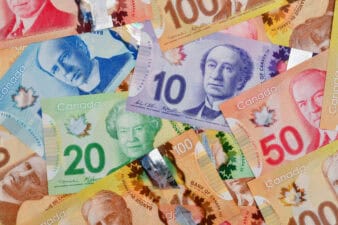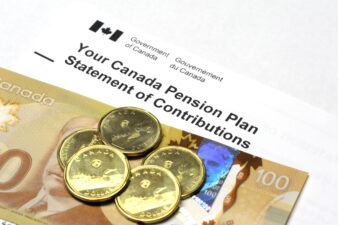Multiple governments around the world have high debt levels. Among the G20 countries, Japan, Italy, Singapore, and the United States topped the list, according to Trading Economics.
Canada is a little better, but it still made seventh place. Our national debt to GDP was about 90% at the end of 2018, while the U.S.’s was about 107% at the end of 2019.
The wage subsidy program, CERB, and other emergency aid have cost the Canadian government more than $145 billion. The wage subsidy program and CERB costs were already the largest economic aid package since World War II!
There are similar emergency aids for the economy in other countries, including the United States. There’s no doubt the aid will add to the countries’ debt levels. Moreover, corporate and household debt are also sky high.
What’s going to happen to all that debt? How is it going to be paid? Will it weigh on our economies?
One thing is for sure: the emergency aid is necessary. Otherwise, there would be social unrest from the elevated levels of unemployment.
Here are a couple more things that could happen and what you should do to protect you and your family financially.
Debt will remain elevated for years
Central banks are going to do what’s needed to keep interest rates low. This is the only way for the debt at all three levels (government, corporate, and household) to remain manageable.
Wherever possible and comfortable, corporations and households are going to continue borrowing when they can, because interest rates are so low and debt so cheap!
Our purchasing power will drop
The Bank of Canada aims to keep inflation at about 2%. From 2016 to 2019, respectively, the inflation in Canada was 1.4%, 1.6%, 2.3%, and 2%. As inflation continues at a rough pace of 2%, it’s going to reduce the value of debt over time.
In time, inflation is going to eat away our purchasing power, too. Therefore, a good starting point is to aim for investment returns of more than 2%, preferably higher.
Invest for great returns
By aiming and getting returns of more than 2% from your investments, you will increase your purchasing power over time.
Buying assets that provide stable cash flow is a straightforward way to achieve that goal. You just need to get income that equates to more than 2% after accounting for expenses, such as taxes and property management fees in the case of rental properties.
Investing in dividend stocks makes it even easier. After choosing the businesses you want to invest in, buy their shares. There are no expenses attached other than trading fees and taxes.
Some platforms even have commission-free trading, which makes it easy for new investors to start small and employ dollar-cost averaging.
If you buy shares in your Tax-Free Savings Account, the gains and income are tax-free! You’ll keep all the dividends that your stocks pay you.
If I were to start a dividend portfolio today, I’d begin my research in utilities, REITs, technology, and banks. For example, start with names like Fortis, Brookfield Property, Open Text, and Royal Bank. They offer diversity and different growth profiles. Additionally, they provide an average yield of 6.2% if you invest in the same amount in each.
Without accounting for their growth, just from the income they provide, you’d triple your purchasing power!







